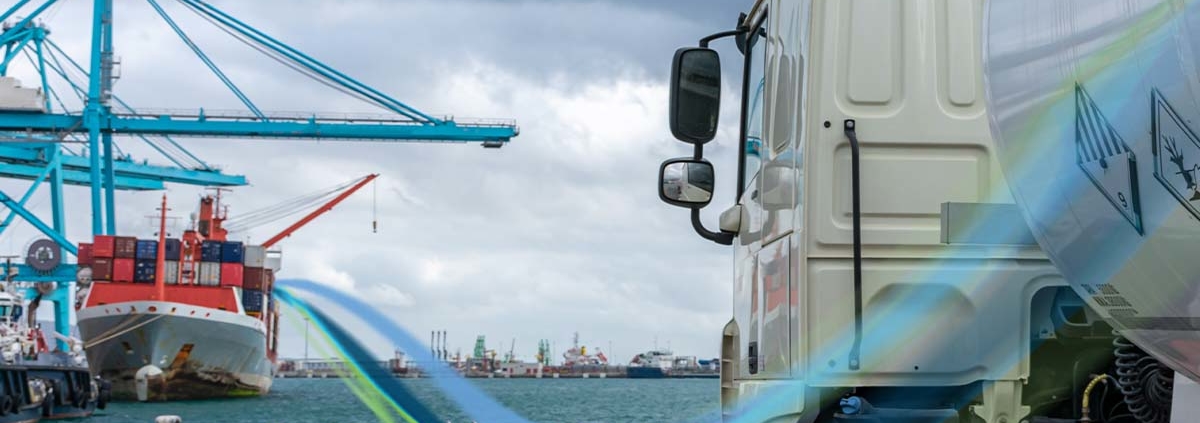Disasters at sea that are caused by shipping dangerous goods can be extremely harmful to marine life and to the eco-system. These disasters can sometimes take up to years to recover from.
The Sri Lankan disaster from May of 2021 is a prime example of how damaging the leakage of dangerous goods at sea can be. In this disaster, one of the containers containing nitric acid, was not stored properly, which then caused a leak. A fire broke out aboard the Sri Lankan vessel, the X-Press Pearl, which then spewed dangerous goods, such as nitric acid, caustic soda, methane and sodium methoxide into the eco-system. Raw plastic materials that are typically used to create plastic bags were also spewed out into the environment. This was extremely hazardous for the surrounding marine wildlife and also the wildlife on the beaches. Many fish and other creatures were found dead, having ingested harmful materials. It is predicted that this disaster could take years to recover from.
However, the shipping of dangerous goods doesn’t have to end in disaster and can be prevented.
Following the regulations
The
International Maritime Organization (IMO) have produced two international conventions that govern the transportation of dangerous goods. The
International Convention for the Safety of Life at Sea (SOLAS) deals with the safety aspects of the transportation of dangerous goods. The first version of the SOLAS convention was adopted in 1914, after the Titanic disaster. The most up-to-date version of the convention is from 1974. The SOLAS convention covers all aspects of safety at sea, as well as the shipping of dangerous goods.
The
International Convention for the Prevention of Pollution from Ships (MARPOL) is another convention that governs the transportation of dangerous goods. MARPOL deals with the prevention of pollution arising from the transportation of dangerous goods by sea. MARPOL was introduced in 1983 and has thus far been a success. A requirement was set in place by the MARPOL convention for oil tankers from 1996 onwards to be fitted with a double hull. This can help to prevent any disasters.
There is a separate code produced by the IMO, which covers the transport of packaged dangerous goods by sea. This code is the
International Maritime Dangerous Goods (IMDG) code. There are several reasons for the existence of this code, one of the main ones being that it helps to identify goods which are considered to be dangerous for transport. This code also aims to identify any dangers that are posed when shipping dangerous goods, and also ensure that the correct measures are taken to enable the goods to be transported safely, without concern to health of any persons onboard the ship, or to wildlife. This applies to both on the ship and in port.
Following these regulations is such an important step to ensuring the safe shipping of dangerous goods. Preparing the shipping and ensuring that all rules are followed is not something that should be left to the last minute. It is something that should be well-planned and organised.
Issues with mis-declaring your cargo
Mis-declaring cargo can be very dangerous, as it means that people may not handle the package with the utmost care, as it won’t be considered a dangerous container. This can then mean fires break out and cause disasters at sea. This can also sometimes be fatal to the crew involved, as it has been known that crew have previously been killed in some of these disasters. Thus, proving that following the rules and ensuring that cargo is declared properly should be the most important thing to consider when shipping dangerous goods. It could literally save lives.
There is an example of mis-declaring goods in 2002 on the
Hanjin Pennsylvania. There was a cargo of calcium hypochlorite that was undeclared. This then led to the cargo being stored in a warmer part of the ship, which heated up the chemical. This then caused an explosion, which then set off a fire, which also then set off a cargo of fireworks.
There have now been laws put in place that help to prevent the mishandling of dangerous goods. If a shipping agent or handler is caught breaking the rules or cutting corners, there can be some serious consequences, including huge fines or even jail time.
In short, make sure that all rules and regulations are followed and that no corners are cut when it comes to shipping dangerous goods, as the results of these actions can be fatal, and you could potentially face some serious consequences.
If you have any questions above the shipping of dangerous goods, then please do not hesitate to
contact us.
